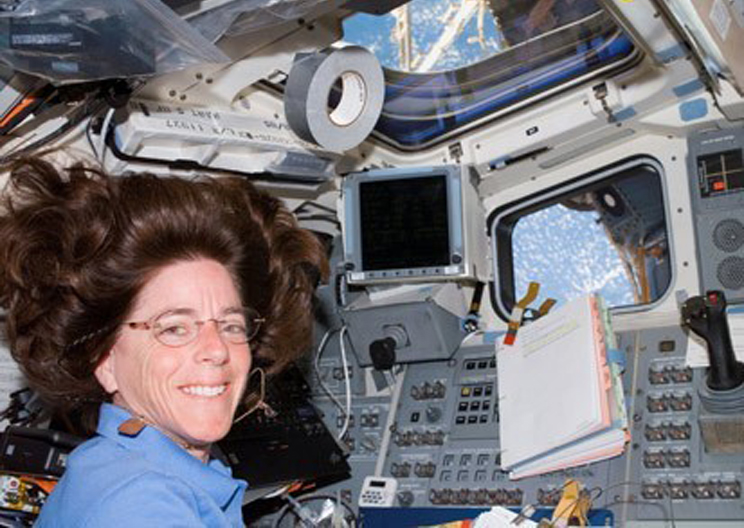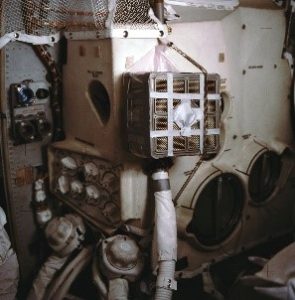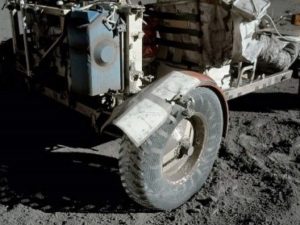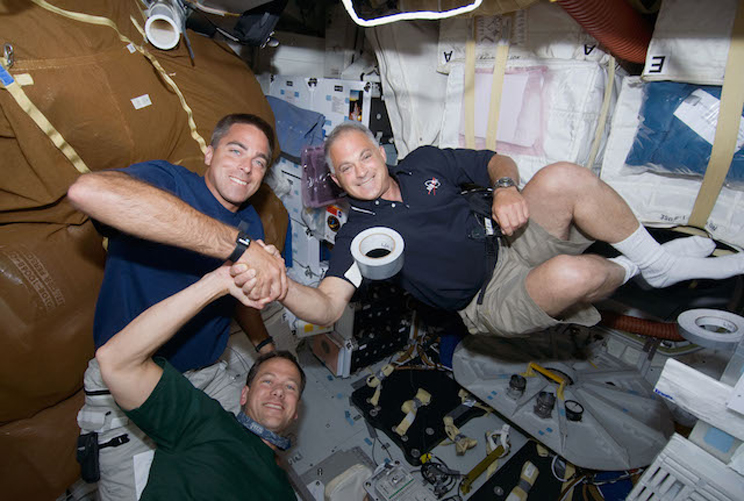Out of This World Tape

Here on Earth, we use duct tape for many things in our daily lives. However, few people know it isn’t only used on the ground. Rockets, space shuttles, and space stations use duct tape, and it flies on every NASA mission. Tape has helped save astronauts’ lives, and it is easy to see why they – and we – are over the moon about it.
In 1970, as Apollo 13 neared the moon, disaster struck. After an oxygen tank exploded in the service module, astronauts Fred Haise, Jim Lovell, and Jack Swigert needed to seek refuge in the lunar module. Forced to abandon their moon landing mission, the astronauts undertook a new mission: survival.
Apollo 13’s lunar module filtration system repaired with
duct tape.
With three people in a module built only for two, carbon dioxide levels rose dangerously. To survive, the astronauts needed to filter the carbon dioxide by fitting a square CO2 scrubber to the circular filtration system in the lunar module. Finding an unlikely hero in duct tape, NASA’s ground team helped the astronauts create an adapter using the tape to connect spacesuit hoses and tube socks, saving Haise, Lovell, and Swigert.
However, 1970 would not be the last time tape would save astronauts from a sticky situation in space.
Just two years later in 1972, Apollo 17 astronauts Gene Cernan and Jack Schmitt landed their lunar module, Challenger, on the moon. While using their Lunar Roving Vehicle (LRV) on a geology exploration, a hammer in Cernan’s pocket brushed the LRV’s fender, causing part of it to break off. While losing a fender on Earth may not be cause for too much concern, on the moon, it endangers not only the mission, but the astronauts’ lives.
A fender-less LRV means a shower in moon dust for the astronauts and their rover. Moon dust on a spacesuit can absorb the sun, dangerously overheating the astronaut inside. The dust’s abrasiveness can scratch the space helmet’s visor glass, making it very difficult for the astronauts to see. When worked into an LRV’s parts, moon dust can render them useless. This can result in vehicle failure, potentially stranding astronauts. With no back up parts, Cernan and Schmitt needed to repair the fender, and duct tape was their tool of choice.
Tape and laminated maps replace a fender on the Challenger’s Lunar
Roving Vehicle.
With duct tape, the astronauts managed to repair the fender and complete their geology exploration for the day. Understanding the gravity of the situation, NASA engineers on the ground instructed the astronauts to use duct tape on laminated maps to replace where the fender tore off. Built and reinforced with tape, the new fender lasted for the duration of the mission and allowed for successful completion of the Apollo 17 moon landing.
Knowing how life-saving tape can be, it is clear why NASA astronauts bring it on every mission. Astronauts use tape not just for emergencies, but to make their lives easier. Tape can repair jetpacks, modify tools, keep food and personal items from floating away, and even keep the astronauts themselves from floating away – tape keeps their feet on the floor in microgravity.
While astronauts use tape thousands of miles away in space, you can use it much closer to home. At Ideal Tape, our versatile duct tape is Ideal Seal 469. It is designed for general purpose packaging, bundling, waterproofing, and securing materials on the job, but with endless possibilities and a little ingenuity, you can use this stellar tape in unlimited ways.
Astronauts Christopher Cassidy, Dave Wolf, and Tom Marshburn on the Space Shuttle Endeavour.





